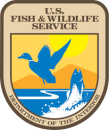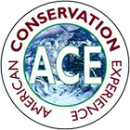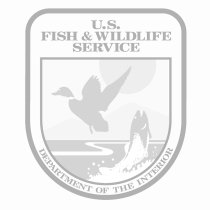Location
States
New MexicoEcosystem
River/streamIntroduction
The signing of the ROD was the culmination of ten years of coordination and collaboration with stakeholders. In addition to riparian riparian
Definition of riparian habitat or riparian areas.
Learn more about riparian restoration, the ROD outlined several other management actions that would be implemented. They include the acquisition of water rights via a newly developed Environmental Water Transaction Program, levee improvements, elimination of grazing leases, the development of a channel maintenance monitoring program, and the construction of irrigation infrastructure to support habitat restoration for threatened and endangered species. In 2011, USIBWC and the US Fish and Wildlife Service (USFWS) signed an interagency agreement for collaboration on habitat improvements for fish and wildlife.
The RGCP is designed to provide flood protection against a 100-year flood and assures releases of Rio Grande Project waters to the US and Mexico from the Elephant Butte and Caballo Reservoirs upstream, in accordance with the 1906 Convention between the United States and Mexico. The USIBWC was granted authority to construct, operate, and maintain the RGCP through the Act of June 4, 1936, 49 Stat. 1463, Public Law No.648.
Key Issues Addressed
In riparian ecosystems across the Southwest, saltcedar (Tamarix spp., also known as tamarisk), drought, and water-use practices have degraded the physical and biological characteristics that support native wildlife and their habitats. USIBWC developed an Environmental Impact Statement on river management of the RGCP to comply with the National Environmental Policy Act (NEPA). Under the resulting ROD, USIBWC must meet statutory requirements for flood control and water delivery, while operating and maintaining the river corridor in an environmentally sustainable manner. Habitat restoration plans were developed to address these issues and to comply with the Endangered Species Act (ESA) for the endangered southwestern willow flycatcher (SWFL) and the threatened yellow-billed cuckoo (YBCU). Restoration included mitigation for channel maintenance activities that impacted vegetated islands in the river with documented SWFL territories.
Project Goals
- Implement habitat restoration to reduce saltcedar, increase native riparian vegetation, and develop a mosaic of habitat types to support the SWFL and YBCU
- Partner with the US Fish and Wildlife Service (USFWS) and other entities
Project Highlights
Planting at Scale: From 2011 to March 2020, USIBWC partners and contractors planted a total of 110,770 trees and 11,987 shrubs.
- Scale of Restoration: USIBWC implemented restoration at 22 sites (9 by USFWS and 13 by environmental contractors) covering 509 acres. Twelve sites (95 acres) target flycatcher habitat.
- Pilot Areas: Before engaging in the full scale of restoration, USIBWC selected 5 sites (207 acres) as pilot areas for saltcedar control, soil stratigraphy and texture delineation, and native plantings.
- Site preparation: Prior to planting, restoration teams removed saltcedar using a combination of mechanical and chemical methods, and in some cases, prescribed fire for debris piles. At some sites, USIBWC and partners excavated swales in the floodplain to improve drainage and groundwater conditions near plantings. At one location, the restoration site was lowered several feet to create an inset floodplain.
- Groundwater Monitoring: USIBWC had 55 shallow groundwater wells constructed across 20 locations including 19 restoration sites. Crews installed automated data loggers on 21 wells, each at a different restoration site, to collect daily pressure and temperature data. They manually collected monitoring data monthly at the other wells.
- Ensuring Water Availability: USIBWC used well monitoring data to determine that native tree poles need to be planted at least 10 feet deep to survive fluctuations in groundwater levels. USIBWC contractors used test trenches and auger holes to identify where planting would most likely be successful based on depth to groundwater, low soil salinity, and soils that were not excessively clayey.
- Tree Species Selection: Restoration crews planted multiple tree species including Goodding's willow (Salix gooddingii), coyote willow (Salix exigua), and Rio Grande cottonwood (Populus deltoides ssp. Wislizeni) with some desert willow (Chilopsis linearis), and Arizona ash (Fraxinus velutina).
- Shrub Species Selection: Restoration crews planted multiple shrub species including sumac (Rhus trilobata), four-wing saltbush (Atriplex canescens), false indigo (Amorpha fruticosa), wolfberry (Lycium pallidum), and seep willow (Baccharis salicina).
- Planting Methods: FWS and contracted restoration teams used different planting methods, and adapted their approaches to on-site conditions. Methods included augering holes for poles, excavating trenches for poles, and transplanting willows with root balls and topsoil intact into trenches dug down to groundwater level (8-10 feet). Crews also augered shallower holes to plant shrubs.
- Vegetation Monitoring: From 2013 to 2020, USFWS and contractors visited restoration sites and wells approximately every two months during the growing season. They recorded qualitative observations on the success of restoration and abundances of key species.
- Monitoring for SWFL and YBCU: Monitoring for SWFL and YBCU at restoration sites began in 2010, prior to restoration implementation. Surveys for YBCU were incidental or focused in areas with large patches of suitable habitat until the species was listed as threatened in 2014.
Lessons Learned
Monitoring data suggest steady increases in the number of SWFL and YBCU using the sites over time. Data also suggest increases in the number of SWFL nesting pairs, nests, and successful nests since 2016. Some detections were at active restoration sites.
Survival of plantings varied highly across sites and species. For trees, survival was typically over 75%. Success of shrubs ranged from less than 10% to over 95%. Success was higher at sites near water sources or with supplemental irrigation. There was also variability of survival across one site—for example, cottonwoods planted at the north end of the Yeso East site thrived, while those planted further south showed signs of stress. IBWC established vegetation survival standards for contracts which required replanting if survival was less than 85%.
Unpredictable hydrology is also a challenge. The Yeso West site was used as a pilot project to see if mechanical lowering of the floodplain could improve habitat conditions for willow flycatchers. The floodplain was lowered several feet and floodplain inlets were constructed above the normal high water mark. Subsequent high monsoonal flood flows inundated the site with strong flows that severely impacted planted willows.
When planting cottonwood and Goodding’s willow poles by auger, success was best when poles were planted to depths of at least 10 feet, and when augered holes were completely backfilled with minimal air pockets. Cottonwoods did better in sandy than clayey soils. Success was highly variable for poles planted in trenches. When poles survived, tree density was higher than for auger methods. Success was likely dependent on how well trenches were backfilled. Trench-planting willows harvested with root balls had near 100% success rates and resulted in faster growth and higher density and coverage than other methods. Many poles that dried out above the soil or were cut by beavers re-sprouted at their bases. Some poles were cut off above the ground following planting. This method resulted in increased density at a faster rate, but trees were shorter for a longer time compared to uncut poles. At sites where beaver impacts were particularly high, pole mortality was reduced when FWS placed wire mesh or other plastic sheath around young poles.
Shrubs grown in specially-grown extra tall pots (about two feet deep) had higher success rates than standard tall pots (about 1 feet deep). Some shrubs were planted in holes with a water trap made by a flange connected to the auger, and this technique helped collect water during watering events and rainfall. Shrubs planted in fall or early winter had better success than those planted in late winter or early spring. Shrubs were more difficult to keep alive than trees. Natural recruitment may be more effective and efficient than shrub planting.
High soil salinity was an issue at many sites. Despite multiple collections of soil salinity data, more sampling would have been beneficial given site variation.
Next Steps
- Work with USFWS to finish construction improvements
- Continue irrigating sites and plant additional trees to meet target densities
- Monitor restoration success and saltcedar regrowth
- Train USIBWC staff to take over operations and maintenance
- Implement aquatic habitat restoration
Funding Partners
United States Section of the International Boundary and Water Commission
Resources
- Final Report on the Ten-Year Implementation of the “Record of Decision on River Management Alternatives for the Rio Grande Canalization Project”: 2009 to 2019
- Rio Grande Canalization Project Record of Decision implementation documentation
Contact
Elizabeth Verdecchia, Natural Resources Specialist, USIBWC: elizabeth.verdecchia@ibwc.gov
Case Study Lead Author
Amanda Webb, CART Research Specialist, University of Arizona
Suggested Citation
Webb, A. D. (2020). “Restoration of Riparian Trees and Shrubs on the Rio Grande Canalization Project.” CART. Retrieved from https://www.fws.gov/project/restoration-rio-grande-canalization-project.







